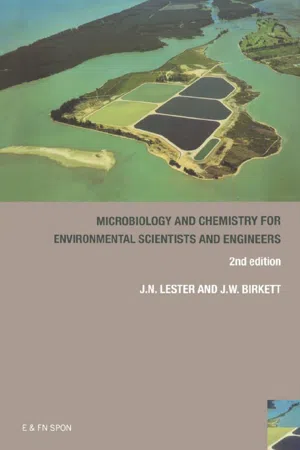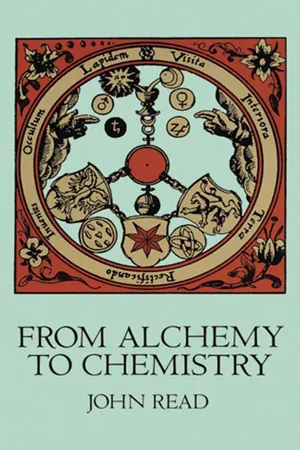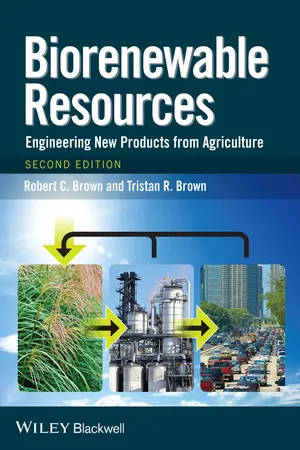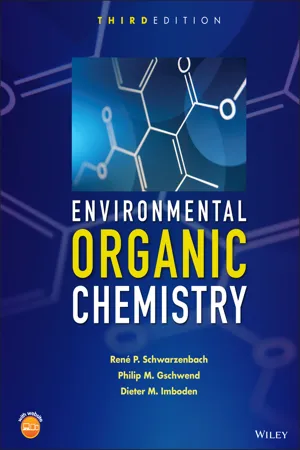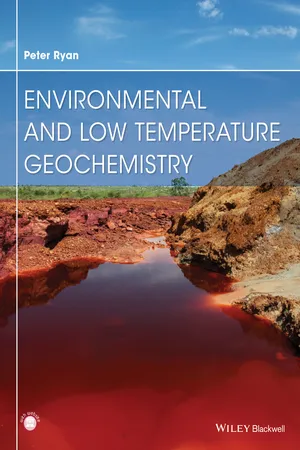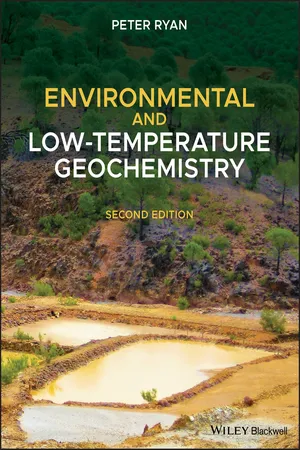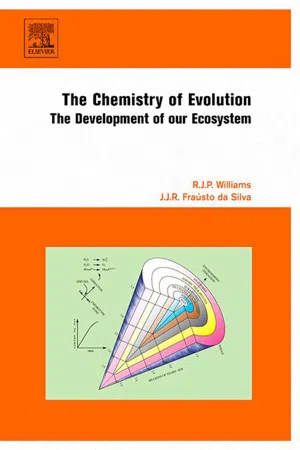Chemistry
Organic Chemistry
Organic chemistry is the branch of chemistry that focuses on the study of carbon-containing compounds, including their structure, properties, and reactions. It is a fundamental field in understanding the chemistry of life, as it encompasses the study of molecules such as proteins, carbohydrates, lipids, and nucleic acids. Organic chemistry plays a crucial role in various scientific and industrial applications.
Written by Perlego with AI-assistance
Related key terms
9 Key excerpts on "Organic Chemistry"
- Jason Birkett, John Lester(Authors)
- 2018(Publication Date)
- CRC Press(Publisher)
Chapter 7Organic Chemistry
7.1 Introduction
Organic Chemistry is the chemistry of carbon and its compounds. Living systems form organic molecules and as such they are therefore essential to life. Proteins, nucleic acids, carbohydrates and fats are all organic compounds (i.e. the principal component is carbon).Carbon-containing compounds were originally termed “organic” because it was thought that they could only be produced by living plants and animals. However, in 1828 Freidrich Wöhler converted lead cyanate (an inorganic compound) into urea (an organic compound) by treating it with aqueous ammonia.Since this discovery, more than six million organic compounds have been synthesized. These range from molecules such as penicillin to artificial sweeteners like saccharin.Organic chemists are generally concerned with the various pathways involved in synthesizing organic compounds and improving the yield of the final product. Environmental chemists and engineers wish to know about the degradation of organic chemicals and how they will interact with all the environmental compartments (i.e. air, water and land). In order to achieve this, one must have a fundamental knowledge of Organic Chemistry. This chapter discusses these fundamental aspects and the various classes of organic compounds.7.2 The carbon atom
Carbon can form a vast amount of compounds. This is partly due to the fact that a carbon atom contains four electrons in its outer shell and can thus form four single covalent bonds by sharing with four electrons from other atoms. Therefore, the carbon atom will attain a stable electronic configuration (i.e. eight electrons in the outer shell). Carbon can also form covalent bonds with other carbon atoms, a property which is essentially unique to carbon (although silicon also exhibits this). This can result in carbon chains of enormous length and variation. Some examples of this are shown in Fig. 7.1 .Fig. 7.1 Different arrangements of carbon chains.- eBook - ePub
- John Read(Author)
- 2013(Publication Date)
- Dover Publications(Publisher)
However, these substances are so exceedingly numerous that it was found advantageous to keep the term ‘organic’ in use, especially as it began to be realised that the element carbon could give rise to further multitudes of compounds unknown in Nature. The term Organic Chemistry now comprehends all compounds containing carbon, whether of natural occurrence or solely man-made, such as, for example, chloroform, picric acid, synthetic dyes, sulpha drugs, and artificial fibres and plastics. ‘Organic Chemistry’ is thus the chemistry of the carbon compounds.Chemistry is now so vast a subject that in the course of time it has thrown out still other branches. Of great importance is ‘Stereochemistry,’ or ‘chemistry in space’, which deals with the spatial arrangement of atoms within the molecule: this branch arose at about the middle of the nineteenth century (p. 182), and now permeates chemistry in general and Organic Chemistry and biochemistry in particular. ‘Biochemistry,’ in turn, may, like stereochemistry, be regarded as a ramification of Organic Chemistry: it deals with the chemical and physicochemical processes of living plants and animals. Chemistry and physics together comprise physical science, and have therefore an extensive borderland: accordingly, another branch of chemistry, known as ‘Physical Chemistry,’ is concerned with the study of physical properties in relation to chemical constitution and chemical change.Thus, Organic Chemistry forms a link between physical science and biological science; while inOrganic Chemistry is intimately bound up with geology, mineralogy, metallurgy, and more recondite fields of science, such as astro-physics. All branches of chemistry are closely interwoven with physics.Both inorganic and Organic Chemistry have exerted, and continue to exert in increasing measure, a tremendous impact upon the development of modern civilisation. In almost every conceivable direction, ranging from agriculture and the great manufacturing industries to cosmetics and nylon stockings, applied chemistry enters into the operations and activities of everyday life; so that, quite apart from its intense intellectual appeal, chemistry, of all the branches of science, has contributed most to the necessities and amenities of modern life. To mention only a few of the industries depending upon the application of Organic Chemistry: from fats are manufactured soaps, glycerine, candles, paints, varnishes, linoleum, and margarine; industries based upon cellulose yield textiles, paper, guncotton, cordite, artificial silks, and power alcohol; and from coal tar arise dyes, drugs, perfumes, photographic chemicals, disinfectants, explosives, nylons, artificial rubbers, and plastics. - eBook - ePub
Biorenewable Resources
Engineering New Products from Agriculture
- Robert C. Brown, Tristan R. Brown(Authors)
- 2013(Publication Date)
- Wiley-Blackwell(Publisher)
CHAPTER 3 Organic Chemistry 3.1 IntroductionOrganic Chemistry provides the foundation for understanding the transformation of plant materials into biofuels and biobased products. This chapter provides an overview to the subject for readers who are not familiar with the topic or require a brief review. More detailed descriptions can be found in the references at the end of this chapter.The original distinction between inorganic and organic compounds was their source in nature. Inorganic compounds were derived from mineral sources, whereas organic compounds were obtained from plants or animals. Advances in chemical synthesis since the eighteenth century have made obsolete these definitions: the vast majority of organic chemicals commercially produced today are made from petroleum. The common feature of organic compounds is a skeleton of carbon atoms that include lesser amounts of other atoms, especially hydrogen, oxygen, and nitrogen, but also sulfur, phosphorus, and halides.The high chemical valence of carbon allows for complex structures and large numbers of organic compounds. These include compounds consisting of chains of carbon atoms, referred to as acyclic or aliphatic compounds, and compounds containing rings of carbon atoms, known as carbocyclic or simply cyclic compounds. Some of these rings contain at least one atom that is not carbon (known as heteroatoms). These compounds are called heterocyclic compounds. Carbocyclic compounds are further classified as either aromatic compounds, in which electrons are shared among atoms to produce a particularly stable ring, or alicyclic compounds, which includes all non-aromatic cyclic compounds.3.2 Classification of ReactionsA variety of reactions can occur among organic compounds. Addition reactions occur when two reactants combine to give a single product. Elimination reactions involve the splitting of a single compound into two compounds. Most elimination reactions form a product with a double bond containing the majority of the atoms found in the reactant. Substitution reactions involve replacement of one atom or group of atoms by a second atom or group of atoms. Hydrolysis is a particularly important instance of substitution reactions involving the action of water in splitting a large reactant molecule into two smaller product molecules. One product molecule is bonded to the hydrogen atom from the water, while the other product molecule is bonded to the hydroxyl group derived from the water. Condensation reactions involve two reactants combining to form one larger product with the simultaneous formation of a second, smaller product. Dehydration is a particularly important instance of condensation reactions in which water is the second, smaller product. Note that dehydration is the opposite of hydrolysis. Rearrangement - eBook - ePub
Water Quality Data
Analysis and Interpretation
- Arthur Hounslow(Author)
- 2018(Publication Date)
- CRC Press(Publisher)
Table 7.1 .Early Organic Chemistry
The term Organic Chemistry was originally used to designate those substances of plant and animal origin thought to be more closely related to one another than to subsiances of mineral origin. It was known that organic substances form CO2 and H2 0 when burned in air. The number of organic compounds was small and each was named individually. During the first half of the 19th century, most people thought that organic compounds could not be synthesized in the laboratory. Some of the major breakthroughs in Organic Chemistry include:1828 Wohler converted ammonium cyanate (NH4 CNO—inorganic) into urea (H2 N-CO-NH2 -organic).1831 First quantitative analysis of carbon and hydrogen.1845 Kolbe synthesized acetic acid (CH3 COOH).1866 Kekule proposed formula C6 H6 for benzene.1930 International Commission on the Nomenclature of Organic Chemistry. Called IUPAC nomenclature.Table 7.1 Classification of HydrocarbonsThe separation of organic and inOrganic Chemistry remains today. There are many more carbon compounds than there are compounds of all other elements combined, at present count approximately 9 million.Bonding
Most matter consists of groups of atoms joined by chemical bonds where only the outer part of the atoms are in contact. These are called the valence electrons. They may be represented by Lewis symbols in which the atomic symbol is surrounded by a number of dots representing the outer shell of electrons. Examples are Ca: and Na*.Several types of bonding that may be distinguished. Ionic bonds - eBook - ePub
- Rene P. Schwarzenbach, Philip M. Gschwend, Dieter M. Imboden(Authors)
- 2016(Publication Date)
- Wiley(Publisher)
Chapter 2 BACKGROUND KNOWLEDGE ON ORGANIC CHEMICALS- 2.1 The Makeup of Organic Compounds
- Elemental Composition, Molecular Formula, and Molar Mass Electron Shells of Elements Present in Organic Compounds Covalent Bonding
- Bond Energies (Enthalpies) and Bond Lengths: The Concept of Electronegativity
- Oxidation State of Atoms in an Organic Molecule
- Box 2.1 Determining the Oxidation States of Carbon Atoms Present in Organic Molecules
- The Spatial Arrangement of Atoms in Organic Molecules
- Delocalized Electrons, Resonance, and Aromaticity
- Common Functional Groups
- 2.2 Intermolecular Forces Between Uncharged Molecules
- Box 2.2 Classification of Organic Compounds According to Their Ability to Undergo Particular Molecular Interactions
- 2.3 Questions and Problems
- 2.4 Bibliography
2.1 The Makeup of Organic Compounds
To understand the nature and reactivity of organic molecules, we first look at the “pieces” of such molecules, atoms and chemical bonds. Most of the millions of known natural and synthetic organic compounds are combinations of a relatively small number of elements, namely carbon (C), hydrogen (H), oxygen (O), nitrogen (N), sulfur (S), phosphorus (P), silicon (Si), as well as the halogens fluorine (F), chlorine (Cl), bromine (Br), and iodine (I). The chief reason for the almost unlimited number of stable organic molecules that can be built from this limited number of elements is the ability of carbon to form stable carbon-carbon bonds. All kinds of three-dimensional carbon skeletons can therefore be made, even when the carbon atoms are also bound to heteroatoms, elements other than carbon and hydrogen. Such parts of molecules containing heteroatoms are of particular interest because they are often the site of specific interactions and reactivities. Thus, they are commonly referred to as functional groups or functionalities. - eBook - ePub
Flexible Polyurethane Foams
A Practical Guide
- Chris Defonseka(Author)
- 2019(Publication Date)
- De Gruyter(Publisher)
2 Basic chemistry2.1 Brief introduction
Chemistry is the study of the composition of matter and how that composition changes. The two broad areas of chemistry are organic and inorganic. Organic Chemistry deals with matter that contains the element carbon, whereas inOrganic Chemistry is the study of matter mineral in origin. The term ‘organic’ originally used to mean compounds of plants or animals, but now it also includes many synthetic materials that have been developed through research. One such group of synthetic organic materials is called ‘plastics’, under which urethanes are classified.Chemical theory states that all matter consists of simple base substances called ‘elements’ such as hydrogen, oxygen and nitrogen. Matter is defined as anything that has mass (weight) and occupies space, and may exist in the form of a solid, liquid or gas. The structures of matter are composed of small particles called ‘atoms’, which combine to form larger particles called ‘molecules’ and, when these combine, they form compounds. The smallest particle size is an atom, whereas a molecule is formed by two or more atoms. Atoms consist of particles called ‘neutrons’, ‘protons’ and ‘electrons’. The atoms of each element differ in the number of these particles they contain. Thus, no two elements will have identical atoms. The neutron is a particle with no electrical charge, whereas protons are positively charged. Both occupy the centre of an atom called the nucleus. Electrons are negatively charged particles and are in orbit around the nucleus. The negative charge of the electrons moving around the nucleus is equal to the positive charge of the protons in the nucleus. Therefore, for all elements, an atom is electrically neutral. If an atom gains an electron, it becomes electronegative (a negative ion) and if an atom loses an electron, it becomes electropositive (a positive ion). An ion is an atom that has gained or lost one or more electrons. - eBook - ePub
- Peter Ryan(Author)
- 2014(Publication Date)
- Wiley-Blackwell(Publisher)
3 Organic Compounds in the Environment3.1 Introduction to Organic Chemistry: Chains and Rings, Single, Double, and Triple Bonds, Functional Groups, Classes of Organic Compounds, Organic Nomenclature
Organic geochemistry applies to two important issues in environmental science. The first is the fate, transport, and degradation of synthetic organic contaminants in soils, surface waters, aquifers and the atmosphere. These synthetic compounds are typically petroleum-based fuels, solvents, pesticides and pharmaceuticals. The second involves understanding the origins and behaviors in the environment of a wide array of natural organic compounds including (but not limited to) humic and fulvic substances; methane and other non-industrial hydrocarbons (from deep crustal and mantle origins to atmospheric reactions); dimethyl sulfide and other natural marine carbon–sulfur compounds; amino acids in sedimentary rocks; and charcoal produced during forest fires. It is an interdisciplinary field including contributions from geology, soil science, biogeochemistry, environmental geochemistry, hydrogeology, limnology, oceanography, atmospheric chemistry, and others. At its most fundamental level, organic geochemistry is concerned with carbon-based compounds that are studied in Organic Chemistry classes, so the first part of this chapter will focus on selected concepts from the field of Organic Chemistry, including the structures and compositions of some compounds that are environmental contaminants.3.1.1 Definition of organic compounds
Organic compounds are based on chains or rings of carbon atoms that are commonly bonded to hydrogen, nitrogen, oxygen, sulfur, chlorine, phosphorous, and less commonly silicon, iron, trace metals or other elements. For reasons based on historical classification and their often-inorganic origins, there are a few carbon-based compounds that are considered “inorganic carbon”, including the carbonate minerals (e.g. calcite, dolomite), bicarbonate and carbonate anions (HCO3 – and CO3 –2 - eBook - ePub
- Peter Ryan(Author)
- 2019(Publication Date)
- Wiley-Blackwell(Publisher)
3 Organic Compounds in the EnvironmentTwo main areas of concern provide the impetus for understanding the role of organic biogeochemistry in environmental science. The first is the fate, transport, and degradation of synthetic organic contaminants in soils, surface waters, aquifers, and the atmosphere. These synthetic compounds are typically petroleum‐based fuels, solvents, pesticides, industrial chemicals, and pharmaceuticals. The second involves origin and behavior in the environment of a wide array of natural organic compounds including (but not limited to) humic and fulvic substances; methane and other nonindustrial hydrocarbons (from deep crustal and mantle origins to atmospheric reactions); dimethyl sulfide and other natural marine carbon‐sulfur compounds; amino acids in sedimentary rocks; and charcoal produced during forest fires. It is an interdisciplinary field including contributions from geology, soil science, biogeochemistry, environmental geochemistry, hydrogeology, limnology, oceanography, and atmospheric chemistry, among others. At its most fundamental level, organic biogeochemistry is concerned with carbon‐based compounds studied in Organic Chemistry classes, so the first part of this chapter focuses on selected concepts from the field of Organic Chemistry, including the structures and compositions of some compounds that are environmental contaminants.3.1 Introduction to Organic Chemistry: Chains and Rings, Single, Double, and Triple Bonds, Functional Groups, Classes of Organic Compounds, Organic Nomenclature
3.1.1 Definition of organic compounds
Chains or rings of carbon atoms are the fundamental units of organic compounds. Hydrogen is the element that most commonly bonds with the C chains or rings, but it is not uncommon for organic compounds to also contain, nitrogen, oxygen, sulfur, chlorine, phosphorus, and less commonly silicon, iron, trace metals, or other elements. For reasons based on historical classification and their often‐inorganic origins, there are a few carbon‐based compounds that are considered “inorganic carbon,” including the carbonate minerals (e.g. calcite, dolomite), bicarbonate and carbonate anions (HCO3 − and CO3 2− - eBook - ePub
The Chemistry of Evolution
The Development of our Ecosystem
- R.J.P Williams, J.J.R Fraústo da Silva(Authors)
- 2005(Publication Date)
- Elsevier Science(Publisher)
The organic chemicals of organisms are a special set of such small molecules and polymers of various kinds soluble in water. In essence they are formed by the action of light. (9) The inorganic elements in aqueous solution reactions, both acid–base complex formation, precipitation and oxidation/reduction, frequently come rapidly to equilibrium when no more reactions are possible. The implication is that in the environment and in organisms many of their properties cannot change unless circumstances change, for example the introduction of new components. (10) The reactions of the organic chemicals (see (7)) in chemical laboratories and organisms are generally controlled by bound inorganic metal elements, catalysts. Heavy non-metals such as sulfur and phosphorus are also advantageous as carriers and catalyst centres of small organic groups for synthetic purposes due to their intermediate reactivity between light non-metals and metal ions. Catalysis is at the heart of biological activity. (11) Overall these conclusions concerning chemistry mean that an ecological system of the following restricted kind can be generated and can evolve. In the fully cyclic condition the system is element neutral The next chapter will discuss the nature of energy and the ways in which it can be incorporated into chemicals using the basic principles of chemistry and geochemistry set out in Chapters 1 and 2 so as to create what we know as a system called life locked into the environment, the total ecosystem. (Note : Heat is given out in small amounts even in the forward step but we shall ignore it here and elsewhere.) Importantly notice that equilibria limit the diversity of particularly inorganic compounds and complexes but are not usually relevant to the discussion of the properties of organic compounds although they are relevant to certain organic chemical complexes
Learn about this page
Index pages curate the most relevant extracts from our library of academic textbooks. They’ve been created using an in-house natural language model (NLM), each adding context and meaning to key research topics.
